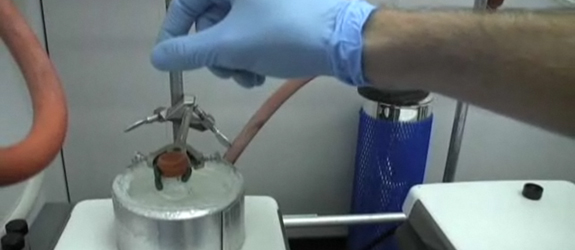An Ingenious Solution for Monitoring Reaction Progress
by
Despite it’s importance, reaction monitoring can be lax, in part because of the hassle of getting into a sealed round-bottom in the middle of a reaction. We have to unclamp, flip-up septum, re-clamp, remove septum, take sample, replace septum, unclamp, seal septum, reclamp then get on with the TLC. After all that work, it’s time for a nap…
We hear you – after a long day in lab, even the littlest things can seem like a hassle. But frequently monitoring a reaction’s progress is essential – particularly if we’re waiting on it’s completion to move forward that day. TLC analysis will reveal whether the reaction is taking place at all (I’m pretty sure I remembered to add the catalyst…) and at what point it’s ready to be worked up (It’ll probably be done if I give it a few hours…).
So when someone comes up with an ingenious solution to solve one of lab’s minor annoyances, we’ve got to spread it like Ebola. Thanks to Jonathan H, monitoring reaction progress has now been reduced to “thread capillary, take sample.”
Looks like our day just got a little easier… Brilliant.
[Click thumbnail to watch Jonathan’s solution]



Jonathan H
wrote on February 12, 2010 at 8:10 pm
Being the originator of this video, I feel the need to post a disclaimer on the technique, so as to avoid minor problems when using this easy way to get TLC samples from your reaction. First, if you're using an argon balloon, make sure to remove it prior to using this technique, as the pressure from the balloon will make your reaction mixture spout out the other end of the TLC spotter. And like most amazing techniques, they don't always work. Using the method in the video, sometimes you will need to add another open needle to the septum to equalize the pressure. And finally, if even that doesn't work, your TLC spotter may be too large in diameter, so try a smaller one! Good luck with following your reactions!